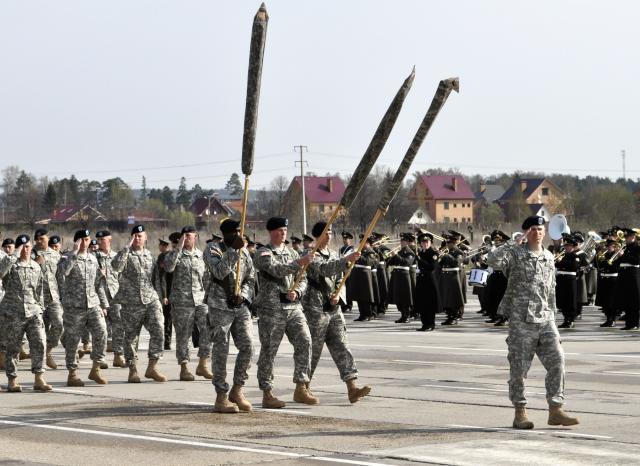NATO’s Supreme Allied Commander Europe said today that Pentagon leaders are reviewing decisions to scale down U.S. military forces in Europe in light of the changing security environment on the continent triggered by Russia’s annexation of Ukraine’s Crimean peninsula and Moscow’s ongoing support for rebels in the east.
“I have talked to leadership here about a function to re-address those decisions,” Air Force Gen. Philip Breedlove told reporters during a Pentagon news conference, just days after NATO leaders met in Wales to discuss the alliance’s response to the crisis in Ukraine. “Because those sequester decisions were clearly made before Russia-Crimea, I see this building now moving towards a review of those decisions,” Breedlove said, referring to the automatic cuts imposed on defense spending by the budget sequester law.
In the years since the end of the Cold War, the number of U.S troops based in Europe has dropped from several hundred thousand to around 64,000 today, with the majority of those remaining based in Germany.
“I am very emphatic that we should cease further decrease of forces in Europe,” Breedlove added. “Quite frankly, the forces that are forward in Europe now are working at full speed as part of their normal rotations into Afghan and other requirements.”
At the same time, the United States has been rotating additional forces into Poland and the Baltic states to reassure allies who feel threatened by Russia’s military involvement in Ukraine. Those operations will continue, Breedlove said, until permanent adaptions called for at this month’s NATO summit are implemented.
Breedlove characterized the ceasefire between pro-Russian rebels and the Ukrainian government as tenuous at best. And while there has been a significant reduction in the number of Russian troops crossing the border, “those forces are close enough to be quickly brought back to bear if required.”
Breedlove said the Russian forces still in eastern Ukraine “are arrayed to set conditions to completely support the long-term effort of the separatists in the east and to either coerce or force the hand in Mariupol,” a frontline Ukrainian town that has been the scene of fighting between both sides in the days before the current ceasefire took effect.










